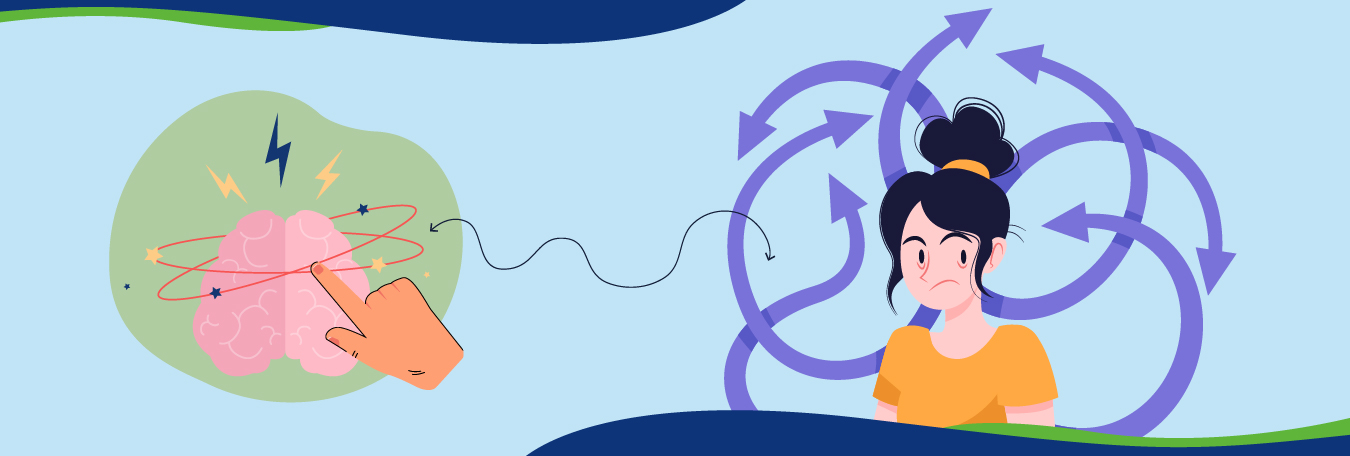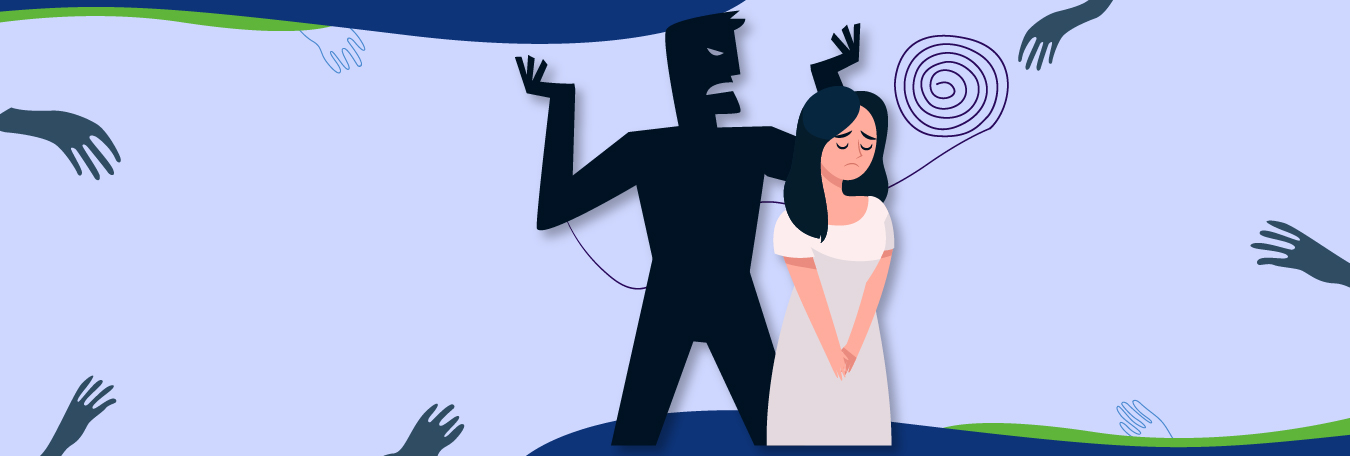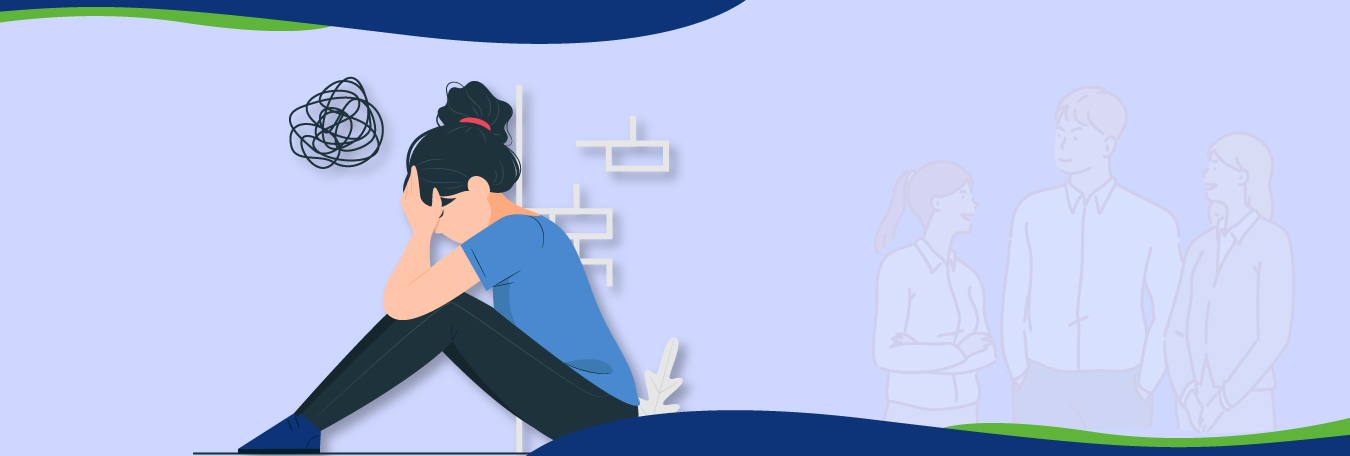OCD has many subtypes and none of these are more enigmatic than the one called postpartum OCD. As the name suggests, postpartum OCD symptoms are more related to childbirth and the worries and obsessions associated with it. In the words below, we are going to talk about the symptoms and the ailment itself, so we can give the information you need to find treatment for it and take preventative measures, especially if it is the case that it runs in the family.
But before we start to discuss postpartum OCD, we need to become acquainted with OCD itself first:
Defining OCD
OCD, or obsessive-compulsive disorder, is a serious mental condition that is characterized by excessive worries that turn into obsession, which in turn leads to compulsions. These compulsions are essentially repetitive and ritualistic actions that affected individuals participate in to get rid of their obsessions, which they think the compulsions will essentially help them do Although it’s just the biochemistry of OCD that changes the brain speaking.
Now let’s get on with discussing postpartum OCD
What is Postpartum Obsessive Compulsive Disorder?
Postpartum obsessive-compulsive disorder is basically OCD but with a new touch. Here the excessive worries are all about childbirth and it predominantly happens in women. To be specific, worries and obsessions tend to arise around 7 to 8 weeks after a mother gives birth to her child or children if they are twins or triplets. This is typically the time when a mother is returning to her usual form that was there before pregnancy.
Obsessions in postpartum OCD are ego-dystonic. It means that thoughts go against a parent’s values, beliefs, and wants. This ensures that these postpartum OCD intrusive thoughts will never lead to infanticide or any other kind of deliberate harm to the baby.
Postpartum is part of the category of mental disorders called perinatal mood and anxiety disorders (PMADs). PMADs usually involve emotions and tend to be prevalent in pregnancy and the postpartum period. These PMADS include postpartum depression, postpartum panic disorder, postpartum psychosis, and postpartum post-traumatic stress disorder (PTSD).
Although the recorded rate of postpartum OCD is relatively low, it is a very serious condition that should be treated as early as possible. It will become more clear for you to understand if you know the postpartum OCD symptoms.

Postpartum OCD symptoms
The common obsessions in postpartum OCD include worries and anxiety about:
- Fear of dropping the baby
- Forgetting about sanitizing baby items
- Excessive worry about if the baby is breathing
- Mistreatment by others, for example, hired help like babysitters
- Mistakenly making the baby sick
The obsessions in postpartum OCD often lead to:
- Excessive check-ups on the baby
- Persistent cleaning routines
- Avoidance behaviors such as avoiding people to get rid of the obsessions that someone might hurt the baby)
Postpartum OCD Causes and Risk Factors
All mothers-to-be are at risk of postpartum OCD if there is:
- A first time experiencing childbirth
- Pregnancy complications
- Genetic predisposition and family history of mood disorders
- Going through the period of obsessional beliefs
- Living with another mental condition such as avoidant personality disorder or obsessive-compulsive personality disorder
- Unrealistic expectations associated with motherhood.
Causes
Like most mental conditions, the causes of postpartum OCD cannot be pinpointed to one single cause. It is probably a combination of causes that inadvertently lead to the diagnosis of postpartum obsessive-compulsive disorder. Its onset is also related to the woman’s mental health history and other elements in her life, such as the sudden and drastic hormone decrease after giving birth may contribute to certain postpartum OCD symptoms. These changes, along with chronic fatigue and overwhelming feelings as mothers greatly care for the new baby. This can essentially lead to chronic anxiety that often leads to OCD.
Postpartum OCD in men also exists but doesn’t share the same biological causes as postpartum OCD in women. But it indeed does exist in men as postpartum OCD in the end is the natural fear and anxiety that comes with the pressure and responsibility of caring for an infant, so men can be affected too after their partner or wife goes through childbirth.
The Link Between Postpartum OCD and Depression
From the mental conditions associated with PMADs, postpartum OCD is the most common one that arises and is likely the outcome of the triggers described above. When it comes to the link between depression and postpartum obsessive compulsive disorder research suggests there are similar genetic polymorphisms to perinatal depression and the said OCD condition. Shared genetics may suggest that if you’re predisposed to one of these conditions, you’re naturally predisposed to the other. This is why it is suggested both depression and postpartum OCD have high chances of comorbidity, but the research is not conclusive on the origins of this simultaneous affliction.
The Lasting Impression of Postpartum OCD
OCD that emerges due to postpartum intrusive thoughts can become a lifelong condition if it is left untreated. You may notice symptoms improve significantly after the postpartum period, but that does not mean OCD has completely disappeared. A good question would be: “Can it go on its own?”. Well, let’s answer that.
Over time, the severity of postpartum OCD symptoms can change but as mentioned before they never essentially go away. It is also the case that even when the postpartum period ends, the postpartum intrusive thoughts may not go away and may, in fact, exacerbate when another childbirth comes along. This is why it is essentially important to seek treatment as soon as possible and never leave it untreated.
The Postpartum OCD Treatment
While there is no cure in sight at the time of this writing, postpartum OCD treatment is very much possible and this treatment includes psychotherapy and medication.
ERP
Psychotherapy such as Cognitive behavioral therapy (CBT) formats, like exposure and response prevention (ERP), help treat the underlying anxieties of OCD in a controlled environment by ensuring your triggers lose power over time. This can be done when a mental health practitioner guides you through the process of your negative postpartum intrusive thoughts and helps them get resolved, which is done via exposing you to them after talking about them and identifying them beforehand. ERP is extremely helpful because it is considered to be the gold standard treatment for OCD, including postpartum OCD.
Medication
Medications like antidepressants are prescribed to help regulate mood and balance neurotransmitters that may contribute to postpartum OCD symptoms. It can be combined with ERP, as described above, as a complementary treatment as part of the two-pronged approach to treatment. The two-pronged approach can work very well for treating postpartum OCD intrusive thoughts as it tries to target the symptoms in 360o.
Bottom Line
You have a clear understanding of postpartum OCD now. Postpartum OCD is a subtype of OCD that emerges in the weeks immediately after childbirth. It features symptoms of obsessions and compulsions focused on the well-being of your baby and child-rearing.
As postpartum OCD can be difficult to diagnose, one should ask questions: Do I have intrusive violent thoughts, or impulses involving my baby? Is it stressing me out? Do I constantly check the baby, wash my hands, or engage in other repetitive mental acts that help reduce anxiety? Questions like these can help you lead to a path of a proper OCD diagnosis and ensure early intervention.
As for the treatment you can essentially, you can get psychotherapy, psychiatric medication management, or make use of telehealth psychiatry to ensure your postpartum OCD is treated properly and we can also help you deal with other mental conditions like depression, anxiety, or bipolar disorder at Inland Empire Behavioral Group. Give us a call today!




